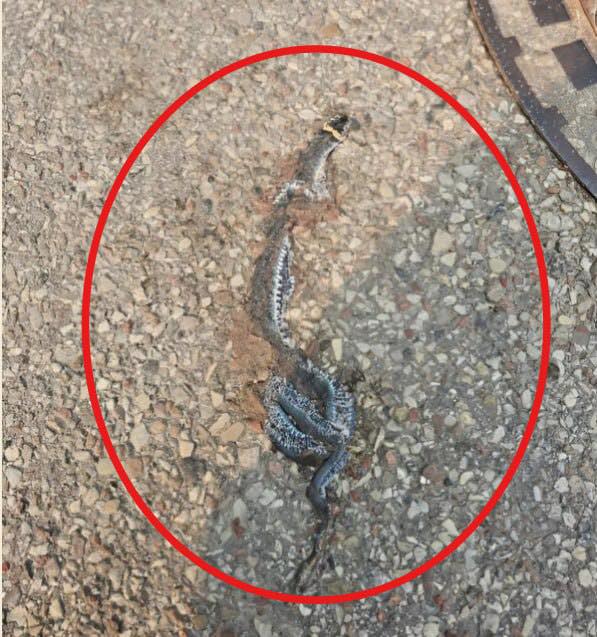While walking down a city street one afternoon, I noticed something unusual lying along the edge of the sidewalk. At first glance, I assumed it was a piece of trash—maybe a torn strap from a bag or a bit of discarded rope—but as I got closer, I stopped in my tracks, horrified. It was a crushed grass snake, lifeless in the middle of a busy urban street.

Cars passed by within inches of it, and people jogged or walked past, seemingly unfazed or unaware of what was lying there. I stood there for a few seconds, goosebumps rising on my arms. This wasn’t just some one-off encounter either—far from it. Over the last few weeks, there’s been a noticeable rise in snake sightings across the city. Friends and neighbors have started sharing their encounters in local group chats, and the stories have gone from surprising to genuinely unsettling. Someone found one curled up in their backyard garden, another spotted a snake right outside their apartment door. Some even reported snakes appearing inside their homes, slithering through ventilation ducts or slipping in through cracks near balconies or walls.
The idea that these creatures were no longer confined to rural fields or forests but were starting to invade the very spaces we call home was both eerie and unsettling. It felt as though the boundaries between nature and the urban world had started to blur—and fast. Experts have weighed in on this growing phenomenon, and their explanation, while logical, doesn’t offer much comfort. They point to climate change and the destruction of natural habitats as the key reasons for this unusual behavior. As more green spaces are cleared for development and weather patterns shift, animals like grass snakes are forced to search for new shelter, food, and water. That means they’re increasingly showing up in places where humans live, work, and play.
While grass snakes themselves aren’t venomous or particularly dangerous to people, spotting one unexpectedly—especially inside your home—can still be deeply unsettling. So what can you do to stay safe and prevent these kinds of encounters? First and foremost, keep your yard or balcony clean and clear. Snakes are naturally drawn to places where they can hide, such as piles of leaves, stacks of wood, and leftover garbage. By removing these potential shelters, you reduce the chances of a snake taking up residence near your home. It’s also important to seal up any ventilation openings or cracks in your home’s exterior, especially if you live on the lower floors of a building. These are the places where snakes often find their way inside.
@jjrheams Finding an extremely rare snake in the middle of london with @Wildlife With Cookie #foryou #wildlife #uk #ukwildlife #animalanomalies #snake #reptile #rare ♬ Deep Lake – Romeo
Be extra cautious with items that you leave outdoors or in unheated spaces, like garages or storage sheds. Always inspect shoes, bags, or boxes before bringing them inside, particularly if they’ve been sitting undisturbed for a while. And if you do encounter a snake, the most important thing is to remain calm. Don’t try to pick it up or move it yourself, even if it appears to be injured or motionless. Call your local animal control or wildlife rescue organization—they’re trained to handle situations like this safely and humanely. As our cities expand and our climate continues to shift, nature is pushing back in ways that can’t be ignored. Wildlife that once stayed far from human neighborhoods is now venturing into streets, yards, and even homes. It’s a reminder that we share this planet, and when we disrupt the natural balance, there are consequences. While it may not be realistic to expect we’ll never see a snake in the city again, we can take steps to protect ourselves and adapt to this new reality. By staying aware of our surroundings, securing our living spaces, and knowing how to respond when we do encounter wildlife, we can coexist more safely and responsibly with the animals being pushed out of their natural environments and into ours.





